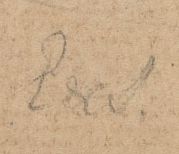A Golden Sentence: marginalia and the new tag set
One of the goals of Team Color Code (sidenote: this is the small group of BAND assistants who are working on The Four Zoas. We’re affectionately known as TCC, which is a name that made sense in our early days and even though it no longer does, it has stuck) is to create a schema that can also be used to tackle transcription and display problems in other works. We’ve always known that the heavily-revised pages of Blake’s Notebook would benefit from an expanded tag set, but I’m starting to come across more and more works that could also use some of the elements that we’re developing in Team Color Code meetings.
Continue reading
